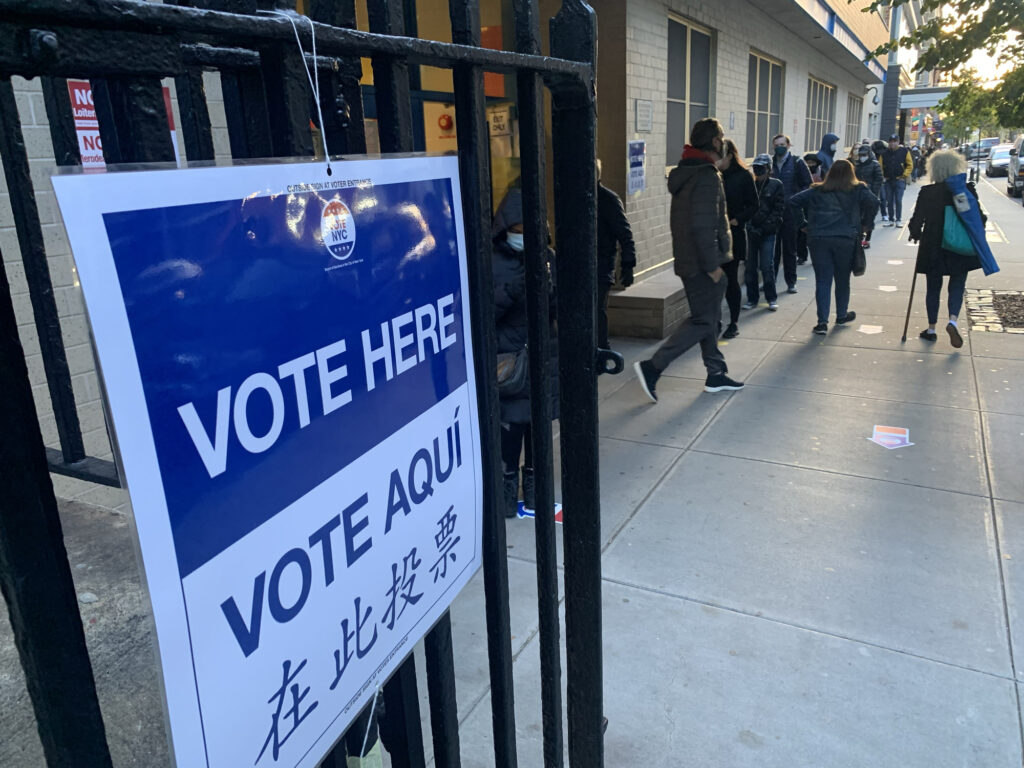4 Approaches to Midterm GOTV

GOTV isn’t what it used to be. Early voting windows are longer, mail-in ballots are more ubiquitous and budgets for things like Election Day rides to the polls are being replaced by digital advertising.
But to get a better sense of the tactics being deployed in 2022, we asked a group of practitioners from different areas of the industry how they’re turning out voters this midterm.
Andrea Hailey, CEO of Vote.org:
The non-partisan turnout organization is in the process of scaling its paid media programs, beefing up its radio and streaming ads, while sending emails and texts to its lists. But it’s also deploying TikTok and Instagram micro-influencers to get its GOTV message out.
“We’ve analyzed in every state that we’re working in, who the micro-influencers are there that have the most amount of influence and we’re getting them now to put out messages on a daily basis,” she said.
The group also taps figures with national name recognition. “We also love the huge national influencers that have an audience we’re trying to reach,” she said, noting that President Obama and Taylor Swift have both encouraged participation and shared the organization’s website, vote.org, with their audiences this cycle.
“We do see huge spikes when that happens.”
The group also has a robust campus program that works directly with student leaders and student athletes to put up pro-voting information. “We’ll be scaling that in these next few days,” she said. “That peer-to-peer engagement is so vital.”
Lane Koch, CEO of Grassroots Girl LLC:
While canvassing is the go-to recommendation for GOTV, according to Koch, she also recommends other budget-friendly alternatives for campaigns that don’t have the funding to deploy paid canvassers in the final week of the cycle, which is a costly endeavor.
“You can still get up on digital, you can still send text messages,” she said. “My suggestion is that eight impressions and two texts messages are going to equal that door knock.”
Koch, who works on the right side of the aisle, added: “This cycle with GOTV, I think what candidates are really seeing is that we have to connect with voters on an emotional level. We have to make sure we’re competing really well with everything else that’s vying for their time.”
And for additional help, she recommends cash-strapped clients boost their collaboration with other candidate campaigns and tighten their target GOTV universes. Cut reliable base voters in favor of unreliable voters. “There are groups of people that you could cut out of your universe so you can hyper focus on your most important people.”
Thomas Peters, CEO of texting vendor RumbleUp:
Peters doesn’t want his Republican clients to get tripped up by early-vote returns: 80 percent of the vote is still out, he notes, ensuring that he’s in for “an insanely busy final eight days.”
It is still possible to stand up a texting program for those who haven’t already started hitting their lists — but move quickly, he advises.
“Capacity is not an issue for us — we have more throughput and redundancy than many other vendors,” he said. “That said, the volume of texting grows exponentially leading up to the election so the sooner you get your first GOTV message out the door, the better. We’ve seen other vendors struggle to deliver messages successfully throughout the year and in previous cycles. The final week/72 hours has had the most industry downtime episodes.”
Henri Makembe, CEO of Do Big Things:
Makembe echoed some advice that other practitioners have shared this cycle, which is that times have changed and relying on old tactics will doom your GOTV effort.
“Our main advice for candidates is always: don’t try to run last cycle’s campaign,” he said. “The landscape is evolving more rapidly than ever. Who’s reachable through traditional TV and radio formats, what’s allowed on social media platforms like Meta and TikTok – the rules are changing from moment to moment.”
Makembe said his progressive digital firm was turning clients onto paid OTT spots to help boost turnout. “This cycle, we’re seeing the benefits of OTT and streaming as platforms for digital GOTV, using issue-specific targeting that will resonate with voters in the absence of high-profile races at the top of the ballot to drive turnout.”
